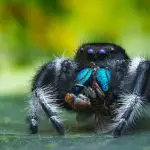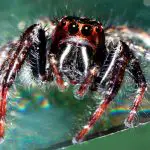Last updated on February 8th, 2023 at 01:34 pm
Where do Regal Jumping Spiders live? In captivity they’re now widespread, but in the wild they are a strictly North American species…
Regal Jumping Spiders are one of the largest and most beautiful members of the Salticidae family to be found in North America. They are encountered in suitable habitat in the south-eastern United States, the Bahamas and the Antilles. In the US, they occur as far north as North Carolina.
Where can I find regal jumping spider?
If you’re looking for a fun and affordable pet, consider the Regal Jumping Spider. This adorable creature has an interesting face, good vision, and surprising jumping ability.
They are also easy to handle and have low maintenance needs. The regal jumping spider’s captive habitat is suitable for people on a budget, and they’re generally not harmful. However, be sure to follow all care instructions carefully.
They should be kept in a clean, uncluttered enclosure with 50 to 60 percent humidity. It should also be taller than it is wide, as these spiders like to climb.
The Regal Jumping Spider is very easy to care for and can be kept indoors or out in a cage. They are active hunters, jumping to catch their prey. They are also very active in their habitat and can be handled for long periods without becoming flighty. These spiders love sunlight, but during the day are mostly preoccupied with hunting for prey.
In the wild, their habitat consists of forest edges, fields and hill country in the south-eastern United Stats. This is a warm, humid area with strong sunlight and abundant vegetation. Regal Jumpers like to hunt on large surfaces, so you most often encounter them on tree trunks or walls.
To maximise your chances of finding one, look for:
- dry tree stumps or dead trees
- large, fallen logs
- walls with direct sun
- plants with large, flat leaves
- edges of forests
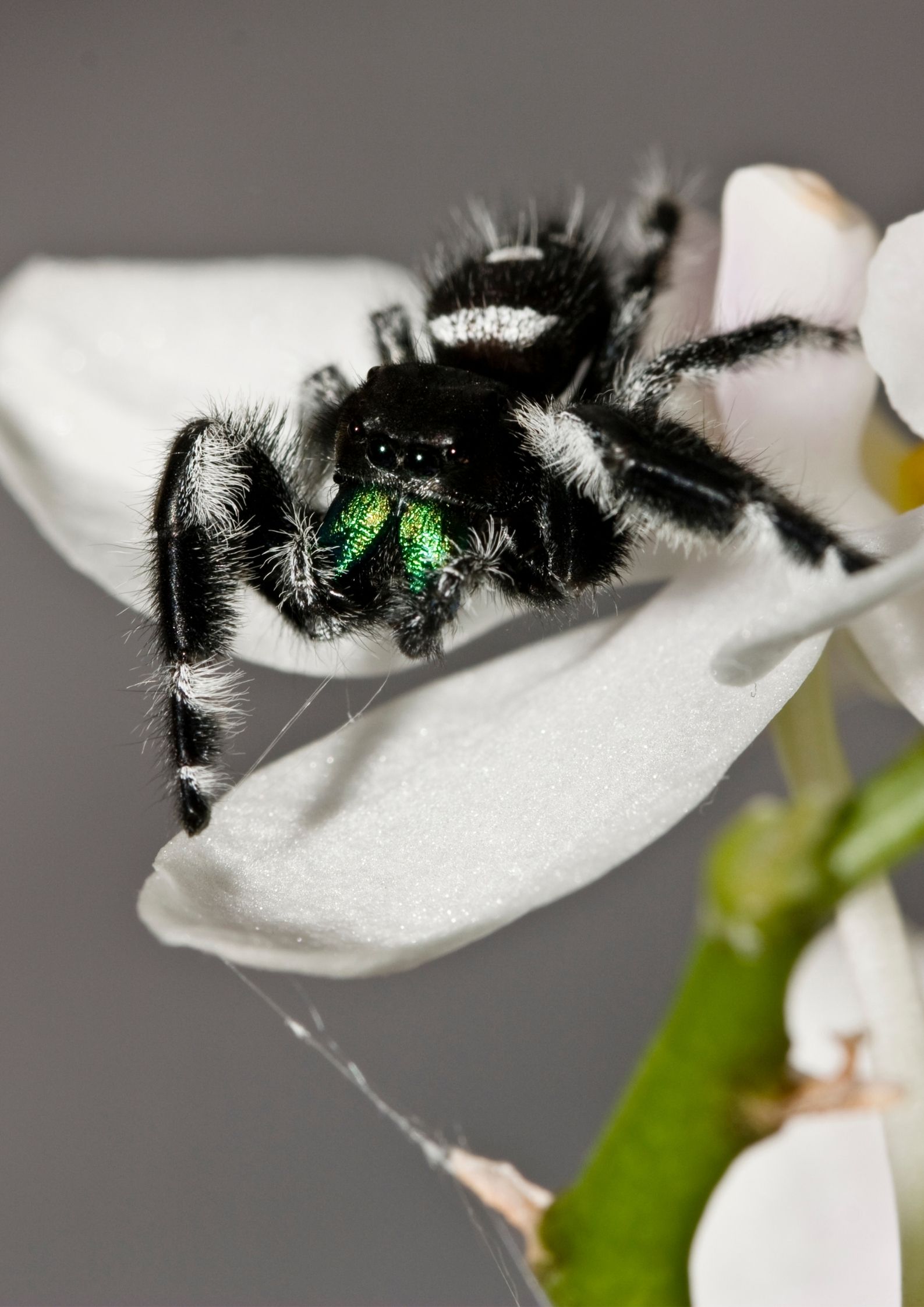
Are Regal jumping spiders rare?
Are Regal jumping spiders rare? You might ask yourself this question before you get one. These spiders are found primarily in open woodland habitats. They do not like hardwood forests and prefer a more herbaceous habitat.
Juvie regal jumping spiders often live in palmetto trees while subadults prefer a more open habitat. However, regal jumping spiders are known to live in all kinds trees and shrubs and can also be found in backyards and on walls of houses on a regular basis.
Peninsula Florida is the main area of distribution of this species. In this state, they very abundant and are not considered rare at all.
Adult male regal jumping spiders are usually about 12 mm long. They can range in size from six to eighteen millimeters. Compared to their female counterparts, male regal jumping spiders are more easily distinguished. Males have a dominant black color and a triangular white spot on their abdomen. In addition, the paired chelicerae of males are iridescent and are enlarged.
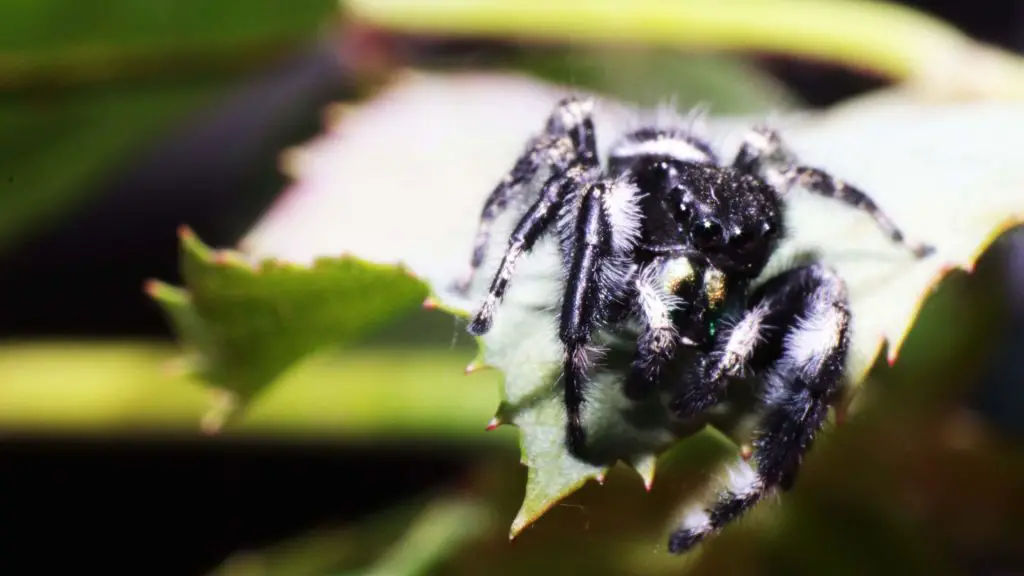
Habitat
In captivity, good Habitat for Regal Jumping Spiders is a well-lit and well-ventilated enclosure with a tiny water dish. Careful handling is essential to developing a good relationship with the spider.
Its habit shouldn’t be complicated, but should include a branch or two for climbing. This spider is not likely to bite you, unless you put them in danger, but you should always exercise caution when handling them at first.
However, it has to said that they are incredibly reluctant to bite unless you handle them extremely roughly.
The Habitat of Regal Jumping Spiders varies widely. Although they are primarily found in woodlands, they are also known to live in automobiles, on walls, in backyards, and abandoned buildings. They also enter homes and porches in search of food.
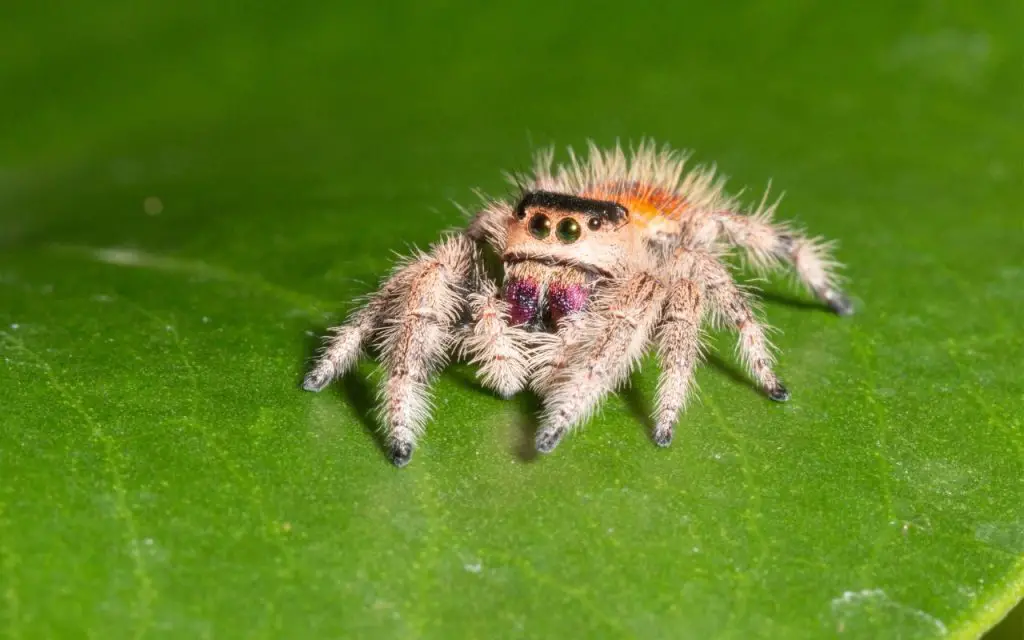
Lifecycle
A common spider in pet shops and online stores, the Regal Jumping Spider’s life cycle includes three distinct phases:
- Egg
- Juvenile
- Reproductive adult
Reproductive adults breed, then the female lays an egg sac which she protects until the young hatch. These juveniles are fully-formed, but incredibly tiny. After their first moult, they leave the mother and are fully independent.
When they are young, the Regal Jumping Spider feeds on tiny flightless fruit flies and pinhead crickets. As they grow, they begin eating larger insects, such as mealworms or subadult crickets.
However, they can also eat roaches, ants, or other larger insects that are much longer than the spider’s body length. The amount of food fed to your spider will vary based on age, but it’s best to provide a meal once per week for a healthy life.
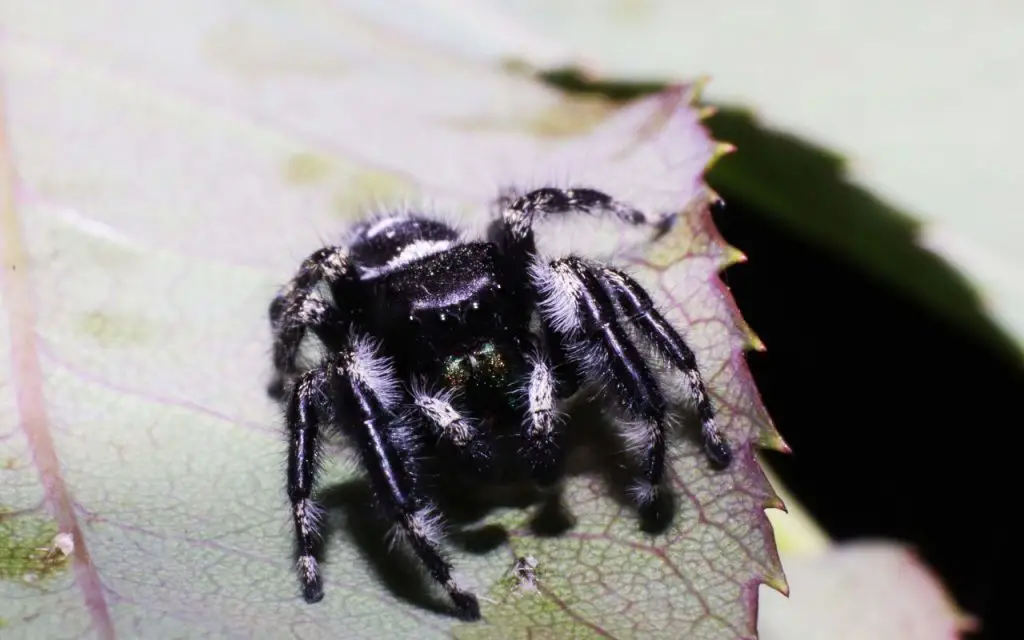
Are Regal jumping spiders smart?
If you’re wondering whether or not regal jumping spiders are smart, there are a few things to consider. First, this type of spider is a highly aggressive hunter and will often take on large prey, such as a cricket that weighs more than the spider itself.
Tackling prey of that size without getting hurt requires a certain amount of intelligence! Furthermore, these spiders engage in mating rituals where they read each others movements and try to impress the females. Again, that takes a certain amount of intelligence.
In fact, it is safe to say that jumping spiders in general are mostly smarter than other spiders. One shining example is the Fringed Jumping Spider (Portia fimbriata), which hunts other spiders. Scientists think that this species is the smartest of all living spiders.
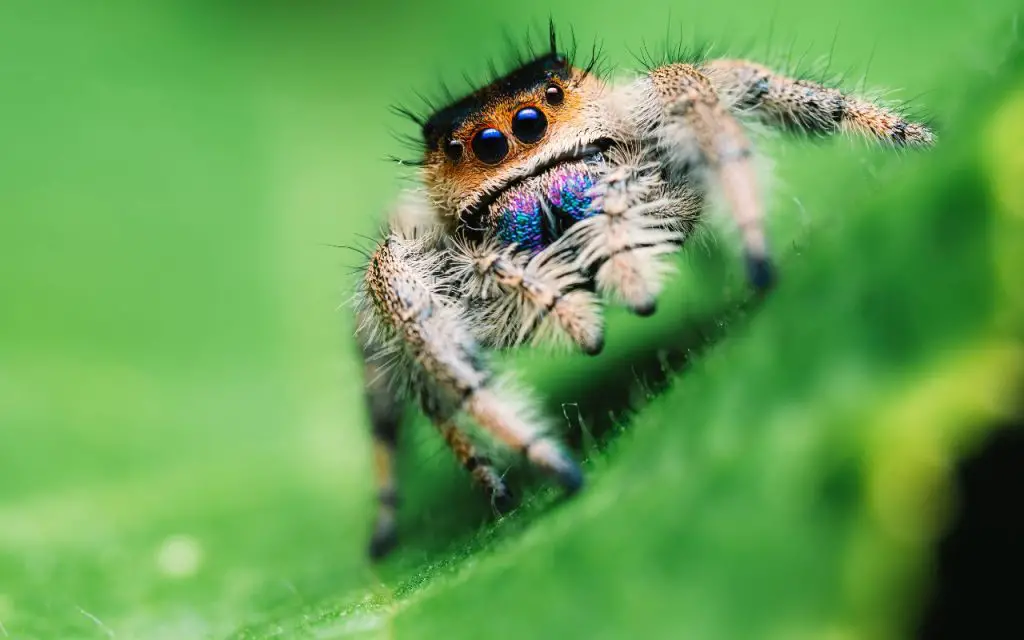
Are Regal jumping spiders friendly?
Although their name may sound a little snooty, regal jumping spiders are actually quite friendly. They are known to recognize their keepers and enjoy being handled. If threatened, however, they may try to escape.
While the venom contained in their bite is not medically significant, it can cause irritation and is enough to incapacitate their prey. Therefore, handling a regal jumping spider must be done carefully to prevent it from biting you.
These beautiful spiders live in bright light and can recognize their surroundings. During the day, they spend their time carefully stalking prey on leaves and branches.
Their enclosures are not very large, but they are easy to care for and maintain. It is possible to catch a regal jumping spider in the wild and keep it at home! Just make sure you have positively identified it.
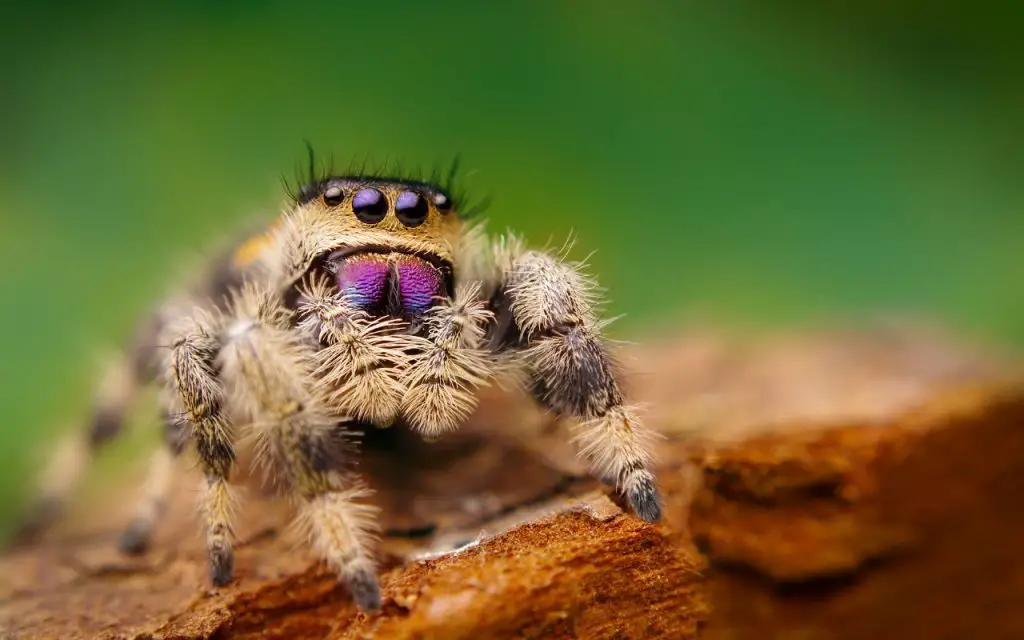
Are Regal spiders poisonous?
Are Regal jumping spiders poisonous? First of all, the correct term is venomous. It’s a common misconception that venomous and poisonous are the same thing. In fact, a venomous animal is one that injects venom, like spiders, whereas a poisonous animal is one that contains poison if you eat it. This particular species is not poisonous, but is mildly venomous.
While most other spiders may bite, regal jumping spiders are not harmful to humans. The fact that they can survive in homes for several months without biting anyone enough to justify their popularity!
While they’re strictly diurnal (hunting during the day), they’re also visual hunters. Their keen eyesight allows them to quickly jump from one area to another to catch prey in the air. While these spiders are relatively small, they have excellent eyesight and can jump up to fifty times their body length.
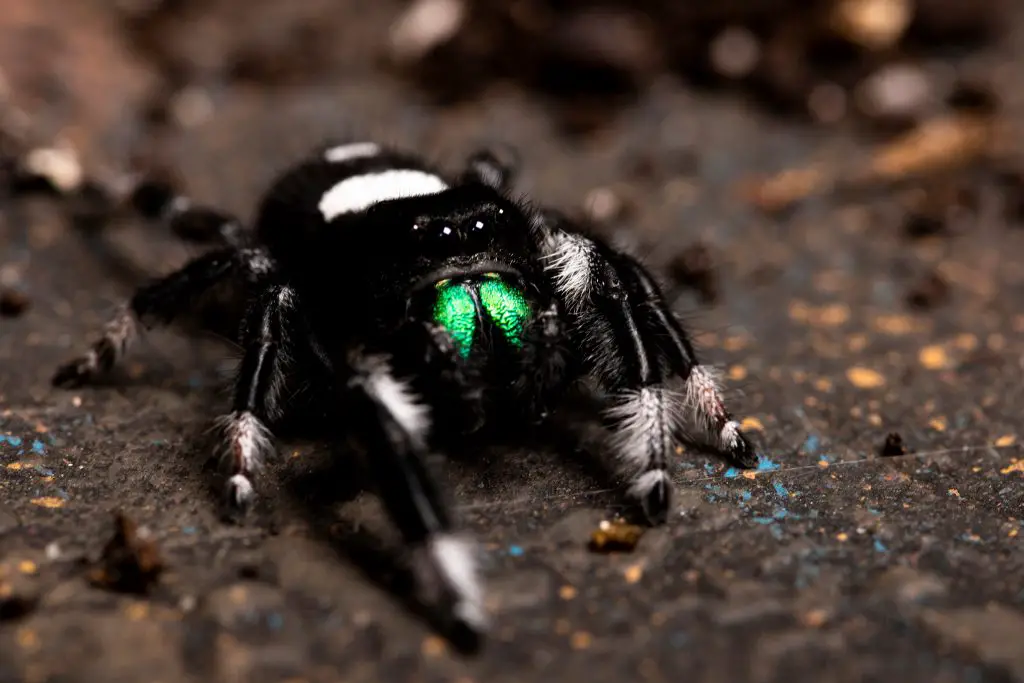
How do you befriend a jumping spider?
Your regal jumping spider is a fascinating pet that can be a lot of fun to care for. Record the things you observe about him. Write down when he eats, how big he grows, and how long he sleeps.
Place a notebook nearby the cage and keep a note of what he does when you’re looking. You can keep track of these things by referring to this notebook at regular intervals.
The first thing you should do is provide some food and water. Feeding your regal jumping spider with a prey is an excellent way to get him used to your scent. Make sure you remove the insect shells from his enclosure as they can attract germs.


